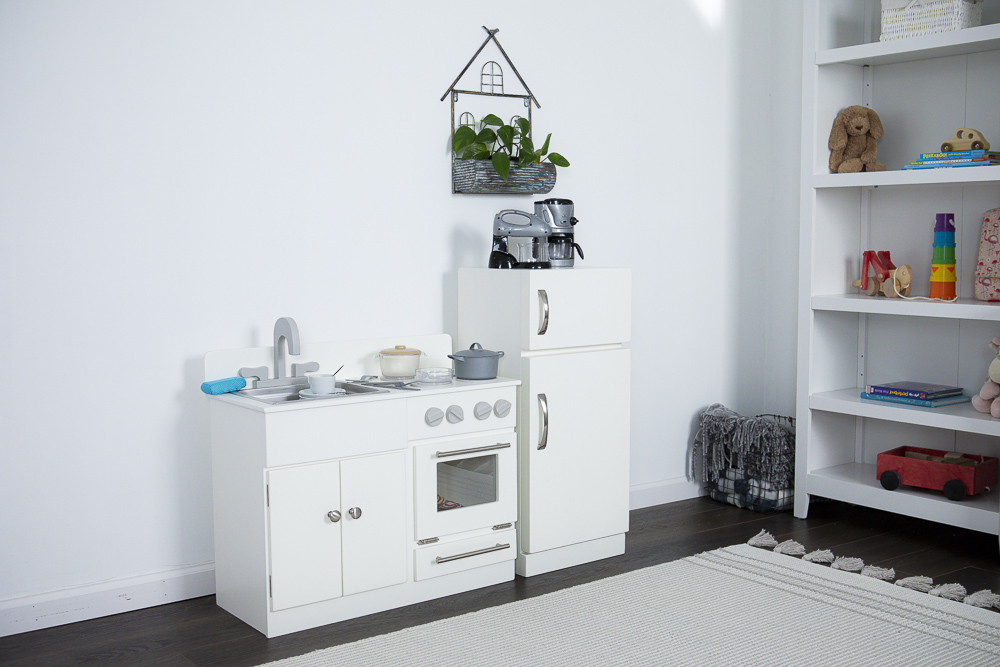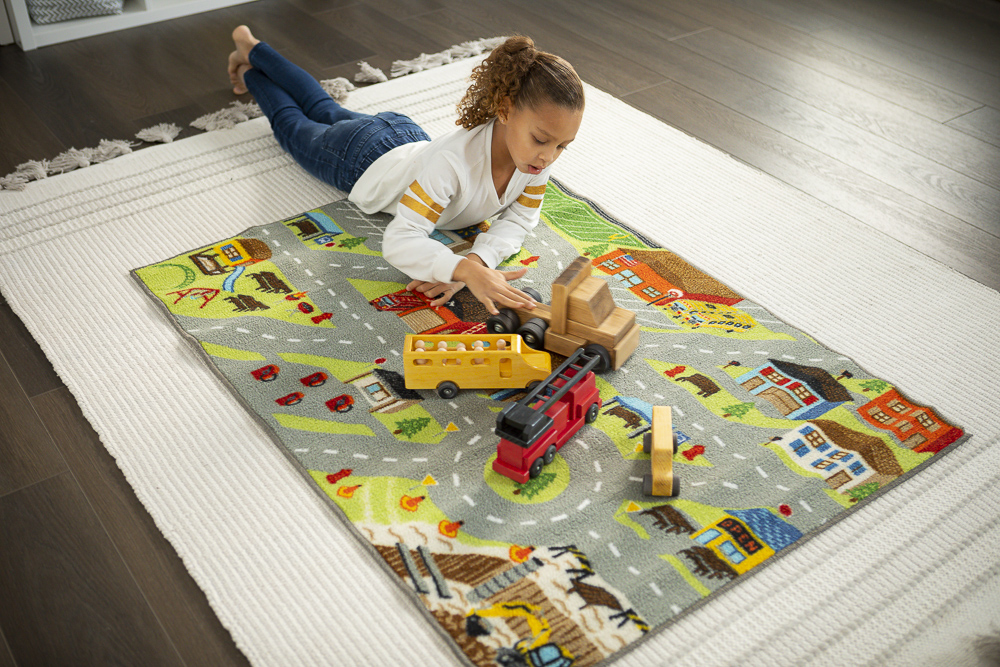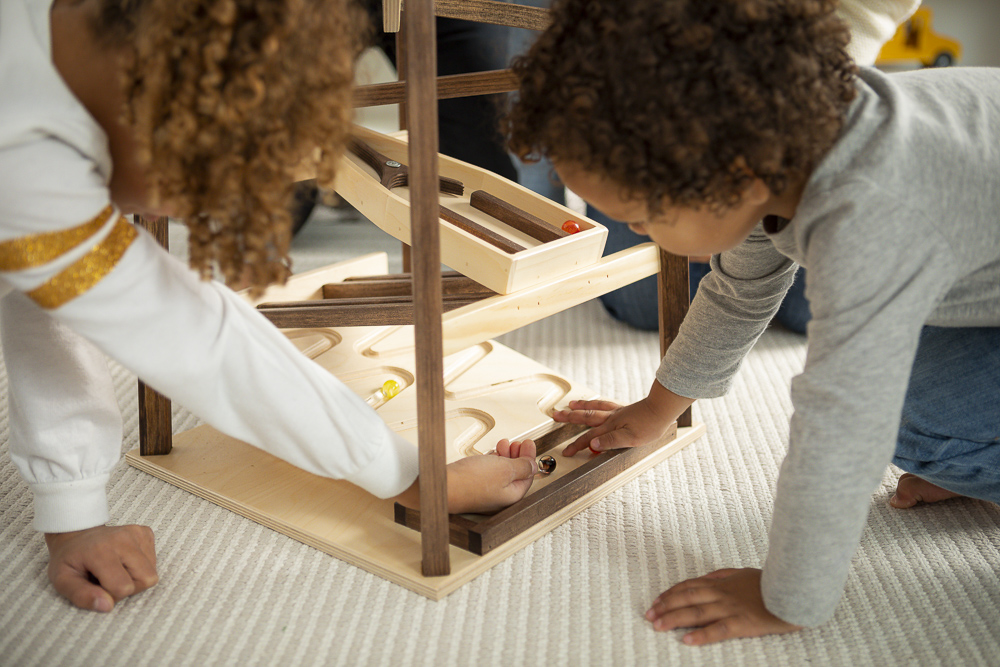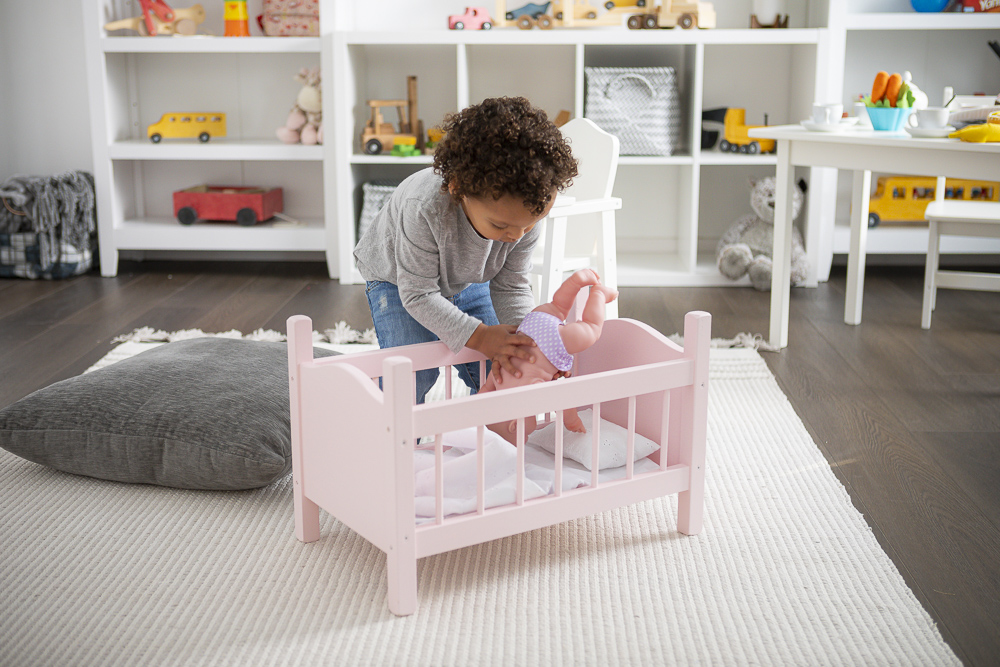
Tips For Keeping Toys Tidy
- Post published:January 14, 2022
The New Year has a way of inspiring a desire for a fresh start. Many families spend this time of year cleaning house and clearing out clutter. This can be a challenge with little ones – children are notorious collectors. Everything seems to carry importance and meaning for the young. That’s a quality we love about kiddos, but guiding them through the process of tidying can help them understand how to care for, and appreciate, their belongings.
Clearing away clutter isn’t about striving for a spotless home. It’s about creating space to spend more time together. By clearing out the items in our homes that no longer serve us, we remove the distractions that take us away from our families. Clutter not only makes a space look busy, but some studies show that it can disrupt focus, create overstimulation in the brain, and, for some, increase stress levels. For children, a tidier play space and fewer toys can provide added benefits such as enhanced creativity and deeper connections and appreciation for the toys around them.
You might not be able to convert your kiddos to minimalism, but you can get them involved in clearing out clutter and taking care of their toys. Involving them in the work will make the experience more rewarding – and help prevent frustrations. Try a few of these simple steps to get started!

Donate Outgrown Toys
Some toys are still great even after multiple generations of use. As parents, we may be tempted to hold onto these beloved items for sentiment, but if you are focused on clearing out clutter, pass them on to another family who will love them, too. Many churches and playgroups will accept larger items by donation such as playhouses, riding toys, and play kitchens.

Repurpose Special Treasures
Some toys just seem destined for the trash. Instead of pitching them, try finding new uses for these old items. Birthday party goodies, carnival prizes, and kids’ meal toys all make exciting alternatives to candy on Halloween.
Discarded game pieces, doll accessories, and building bricks can inspire fun crafts to keep little hands busy on rainy days. And if you’re really creative, you may find that those old tidbits can turn into some really fun art pieces like these!

Throw Out Broken Items
Kids seem to acquire an endless number of tiny trinkets. While your kiddos may have a few favorites worth holding on to, overtime these tchotchkes end up broken or forgotten about. If the part can’t be salvaged or no longer serves a purpose, it won’t be worth donating and should be discarded.

Create a Sorting System
Once you’ve whittled things down to toys that are in good condition and still played with, create a system to help keep them tidy.
Open shelving, bins, and toy boxes are all great options to keep toys in order and easy to access. Use labels or visual signs to help your children remember where each item belongs. Understanding where each toys goes will help them maintain the system over time.

Consider a Toy Rotation
If you’re still feeling overwhelmed by the number of toys in your space, consider using a toy rotation method. Find a space to store toys out of sight, such as in a closet. Only choose a select number of toys to bring out for play at each given time. Swap in new toys every few weeks or so. Older children may enjoy helping with the process and choosing the toys they want to play with during each rotation.

Toys for Meaningful Play
When our children are young, our homes can feel inundated with toys. It can feel exciting to surprise your little ones with a new plaything or reward them with a trip to the toy store. But an overabundance often leaves us with unused and forgotten items that clutter our homes and end up in the landfill. Shifting to a mindset of quality over quantity can help reduce clutter at home and create a gentler environmental impact.
Wooden toys not only look beautiful they also last longer than their plastic rivals. We craft our toys using heirloom quality methods to ensure each toy will withstand the wear of play. Our wooden toys are so sturdy that they are often passed from sibling to sibling and from generation to generation. This enhanced durability creates added safety for your kiddos and keeps our toys out of the trash.

Our toy makers craft each item for open-ended play. This means your kids will get more use from each toy as they grow older. As their imaginations develop, you won’t be tasked with finding new toys to meet their changing interests. Instead, they’ll simply find new ways to play with the toys they already have. And older kiddos may even find new life in once-forgotten toys when younger siblings come to play.
Clearing out clutter is a different process for each family. There are no set of standards that work best for everyone, and no right or wrong number of toys to keep. Instead, focus on how your home makes your family feel. Create space where you can be together and provide room for your littles ones to explore and discover the world around them.
